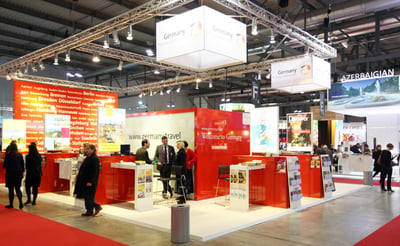4 Ways To Improve WiFi in Large Venues
 Despite recent advances in wireless technology, many large venues continue to suffer from sub-par WiFi performance. To bring your event space up to speed, begin by addressing these four areas.
Despite recent advances in wireless technology, many large venues continue to suffer from sub-par WiFi performance. To bring your event space up to speed, begin by addressing these four areas.
WiFi plays an increasingly important role in our lives. We bring our devices with us everywhere — to festivals, concerts, basketball games — you name it. But despite widespread demand for serviceable wireless connectivity, many large area WiFi solutions leave a lot to be desired.
Achieving high-performing wireless connectivity in large venues represents a monumental challenge — but it’s one that can be easily overcome with strategic planning, and a well-designed implementation. If you're seeking ways to improve your event space’s WiFi, these are the key things to keep in mind:
Large Public Venues: A Unique Solution for Unique Locations
One of the first steps you can take to improve WiFi performance in large public venues is to simply recognize that every location poses its own unique challenges. The size of the building, the shape of the area, the architectural components, foot traffic patterns, and more will all have an impact on what ends up being the best solution for your event space. Each scenario will call for different hardware. For example, concrete and metal walls are known to wreak havoc on wireless signals and will require the strategic placement of specific access points (APs). Outdoor venues will have different demands than indoor ones; event spaces with 100-foot ceilings will have different demands than event spaces with fifteen-foot ceilings. And so on and so forth ad infinitum.
To help facilitate a smooth and successful network implementation, you should employ a wireless site survey to better identify your venue’s optimal WiFi design. Conducting a site survey will help you figure out how to design for multiple configurations. Whether planning a temporary WiFi solution for a major weekend concert, or a long-term solution for a basketball stadium, a site survey is an ideal first step toward ensuring that your attendees’ expectations are met and exceeded.
Capacity Issues
Arguably the biggest challenge when it comes to large venue network design is anticipating the total number of people who are going to need WiFi access at your event. The first step in preparing for capacity needs is simply predicting the number of people who might be in attendance. It is best to anticipate the number of attendees based on the maximum occupancy of the venue. Likewise, you might want to base your attendance predictions off the average turnouts of comparable events.
Once you settle on an attendance prediction, it’s important to anticipate how your guests will move through the venue. This will allow you to anticipate high-density areas so you can prepare your networks accordingly. Areas that are more likely to be densely populated at an event are concession stands, center field seats (at a sports game), ticketing booths, lounges, or even bathroom lines — it just depends on the event. By marking these places ahead of time, you can structure your network so WiFi signal strength is prepared to handle the traffic generated by these busy locations. Among many other factors, you’ll also want to consider the number and types of devices that will be connecting to the network.
In order to meet the extreme demands of large venues — many of which generate multiple Tbps of data traffic — high-capacity wireless networking solutions are needed. That means access points designed specifically for application in these settings.
Recommended Reading:
Solving the Top 5 Wireless Network Challenges for Large Public Venues. Get Your Copy
Deployment
Because attendees will likely vary significantly from one event to the next (as will the physical distribution of user endpoints), it’s important to ensure your large area wifi deployment is designed for flexibility. This will help your network scale up or down as needed depending on user density and traffic patterns.
Adequate network flexibility can be achieved by planning for the “worst case scenario.” If your events are projected to draw 10,000 people, you might expect that 15,000 devices will connect to your network — or it could be 30,000. It all depends. By making sure that you’re planning and designing for the largest possible number of connected devices, you will increase your chances of uninterrupted service and also have options to expand and contract your network as people come and go.
Upgrade to WiFi 6
The best thing that large venues can do to upgrade their wireless connectivity in today’s day and age is to invest in WiFi 6. It’s being called the next generation of the internet, and for good reason — WiFi 6 is incredibly fast (9.6 Gbps vs. 3.5 Gbps with Wi-Fi 5). It’s scalable, built to handle large numbers of low-power, low data rate IoT devices, and (with the right hardware) highly secure.
It's a Team Equation
Above all else, you'll need to foster a solid working relationship with your WiFi integrator. The best partners can help create an optimal WiFi experience from start to finish. This will require that both parties work together to come up with a customized solution that will ensure your next big event is executed flawlessly.
Need help expanding the WiFi in your venue? Get in touch with Turn-key Technologies (TTI) today. With three decades of experience designing, deploying, and managing high-performing wireless networks for large event spaces, TTI has the resources and expertise needed to ensure your large venue keeps visitors coming back.





